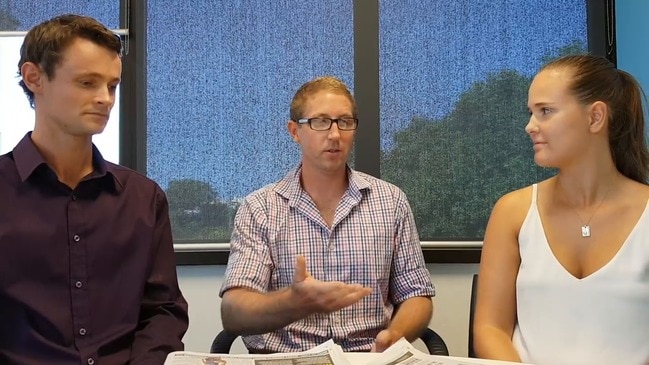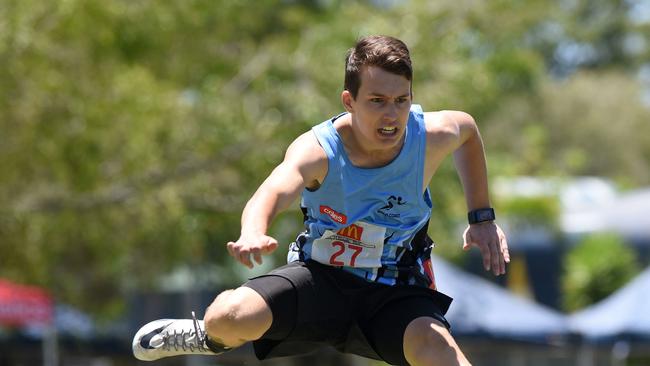Sports broken funding model: Olympic champion
An Australian Olympic champion has taken aim at the current sports funding model and what it means for juniors on the Gold Coast.

Local sport
Don't miss out on the headlines from Local sport. Followed categories will be added to My News.
MY soapbox today is about funding for sport at all levels but mainly the grassroot level.
It is a well-known fact that sport for young athletes is becoming increasingly expensive and if the talented athlete is selected in representative sides, the cost increases exponentially.
Sometimes parents have to make the difficult choice to not send their child to state and national championships.
Recently, I nearly fell off my seat when told that our Prime Minister Scott Morrison recently pledged $40 million to help the Fijian rugby league team play in the second-tier NSW Intrust Super Premiership.
Former Queensland star Petero Civoniceva will be the coach and he was quoted as saying: “It’s been a dream of mine and many others to field a Fijian team in one of our most beloved competitions.”

While respecting Petero’s dream, I do not want it to be at the cost of Australian sport and athletes.
When we are fighting to get more funding for sport at all levels, I find it extremely difficult to swallow that money is going offshore to this degree to help a small number of footballers.
JAYMES Boland-Rudder, NRL head of government and community relations, said the pledge of support to Fiji was an endorsement of rugby league’s growth and work in the Pacific.
He thanked the Prime Minister, and the Department of Foreign Affairs and Trade, for generously supporting and raising the profile of rugby league throughout the Pacific.
He also said the funding would have a profound impact in inspiring the proud and passionate Pacific neighbours and their communities.
My question is, why does the Federal Government not look after its “own backyard” first? From grassroots to the elite, many athletes and families are struggling to make ends meet.
Australia’s commitment to aid the Pacific in general, has risen from $1.1 to $1.3 billion.
The size of Australia’s entire overseas aid budget remains frozen at $4.2 billion after deep cuts in recent years.
The Pacific contribution now represents 30 per cent of Australia’s total aid budget.
I am presuming that the pledge of $40 million for rugby league is in addition to this aid budget.

IN Australia, the Federal Government has a bold vision for sport – to be one of the world’s most active sporting nations through integrity and success.
Part of the 2018-2019 Federal Budget is an investment of about $230 million in a range of sport and physical activity initiatives to get Australians moving more often.
The Government has a “Sport 2030 Plan’’ which has set a target to reduce inactivity by 15 per cent by 2030.
While I applaud this investment, to reach the success of being one of the leading nations in the world, we need to commit more dollars to support our Olympians and Paralympians.
There needs to be a change in the thought processes of politicians and decision makers if success on the international scene is one of the major goals. It is currently too late to make a huge impact for the 2020 Tokyo Olympics but there is still room to make an impact in Paris 2024 and Los Angeles in 2028.
ANY investment in sport is graciously accepted.
It is a known fact that government funding has been slashed by 20 per cent in real terms over the past eight years.
Thar statistic comes from Australian Olympic chief executive Matt Carroll. It is also a known fact that the media and public are the first to denigrate the sports men and women when performances are not on par with expectation in major competitions such as the Olympics.
When the investment into Olympic sports has been slashed since the 2000 Sydney Games – where Australia competed so well – it is no surprise to hear sports yelling for help.
Australia has a long and rich history as a sports loving nation.
From watching our amazing athletes perform to playing backyard cricket, going for a job or swimming laps of a pool, sport has been part of our lives.
Nowadays, Australians need to become active for our physical and mental wellbeing.
IN addition to the funding announcement for Fiji, further Federal funding has been committed to the Lions AFLW team.
A $15 million commitment from the Government will be used to build a training and administration facility including a boutique 10,000-capacity stadium.
Amazing money when we could not keep the warm up track from the Commonwealth Games last year. With interest from overseas consortiums to use the facility it was extremely disappointing. At least it has gone to a good home in Waterford at Canterbury College.
WHAT’S NEXT IN SUNS AFLW PLANS
I am happy to be one of the first to stand up and applaud females for competing in a male dominated sport, but please explain, why cannot the women’s team use the same facilities as the men?
Is that silly suggestion? Is this not duplicating facilities?
Where AFL boasts a $2billion-plus deal with television, why then, does the government need to offer more money?
I WOULD love to see the Federal Government look at sports that really need support.
I am sure, no, I am positive, there are many sports who would benefit greatly to receive funding of the level, given to Fijian rugby league or AFLW (see above).
So what can we do as a community? Speak to your local MP and tell them you want a fair go for sport in this country and to spend more money on homegrown athletes.
My son is in the US on a football scholarship.
REGIONAL LITTLE ATHLETICS GALLERY
He is extremely lucky to be getting amazing life experiences as well as an education.
Many colleges and universities have budgets of between $300 million and $400 million to spend on their sport. Remember this is US dollar and I am only talking about one uni.
With some three to four in some states alone, you are looking at more than $2 billion invested on sporting excellence. When you consider Australia as a nation spends $150 million on its 45 Olympic and Paralympic sports it is abysmal.
For Australia to get better results at the top end, the federal and state governments need to invest in our youth.
Look at talented young athletes, recognise them, and keep them engaged in the sport of their choice.
To do this, grassroot sport is the key – encourage young athletes to become physically literate and encourage them to further their dreams.
Too often our talented young athletes are targeted by the money sports. We need to emphasise the importance of representing their country at the Olympic level rather than in a domestic competition.
This is sometimes difficult because they choose lucrative contracts ahead of struggling to compete for their country.
I WOULD like to thank the Gold Coast City Council for the funding it provides the Gold Coast Academy of Sport in conducting the many programs we do for junior sport.
As a not-for-profit organisation, the academy runs programs at cost neutral to keep them affordable for families.
The academy relies heavily on sponsorship from like-minded companies.
We thank them all for their continued support.


